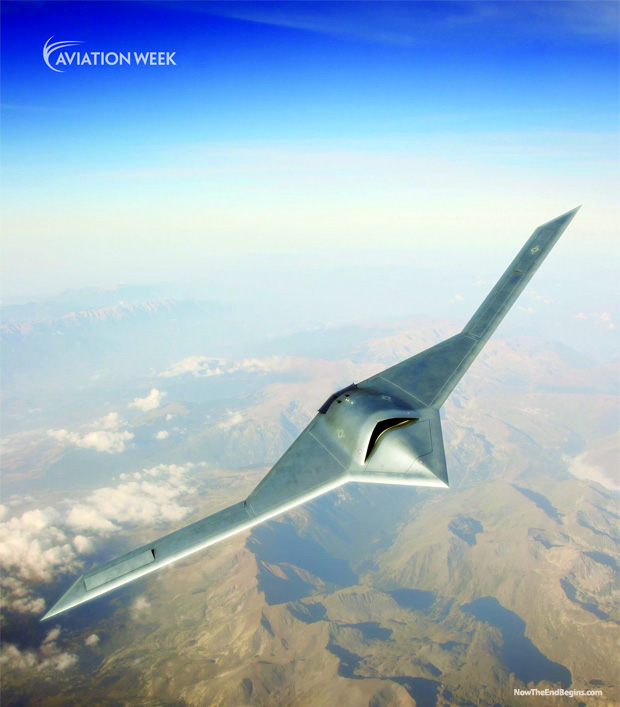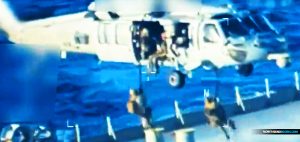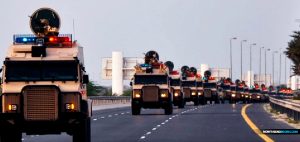Drones
New Global Arms Race Use Weapons Directed By Robots
Governments are developing weapons that rely on artificial intelligence, not human instruction, to decide what to target and whom to kill.
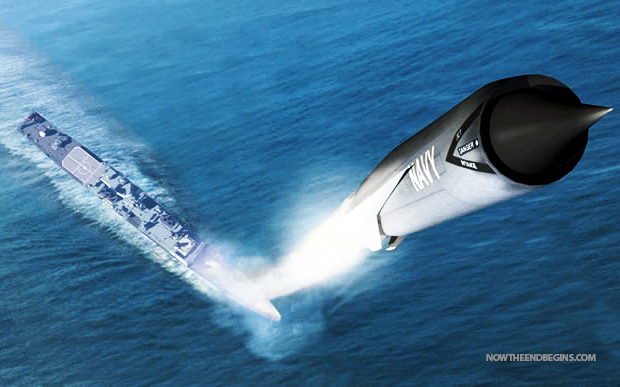
On a bright fall day last year off the coast of Southern California, an Air Force B-1 bomber launched an experimental missile that may herald the future of warfare
Initially, pilots aboard the plane directed the missile, but halfway to its destination, it severed communication with its operators. Alone, without human oversight, the missile decided which of three ships to attack, dropping to just above the sea surface and striking a 260-foot unmanned freighter.

“It will be operating autonomously when it searches for the enemy fleet,” said Mark A. Gubrud, a physicist and a member of the International Committee for Robot Arms Control, and an early critic of so-called smart weapons. “This is pretty sophisticated stuff that I would call artificial intelligence outside human control.”
Warfare is increasingly guided by software. Today, armed drones can be operated by remote pilots peering into video screens thousands of miles from the battlefield. But now, some scientists say, arms makers have crossed into troubling territory: They are developing weapons that rely on artificial intelligence, not human instruction, to decide what to target and whom to kill.
Britain, Israel and Norway are already deploying missiles and drones that carry out attacks against enemy radar, tanks or ships without direct human control. After launch, so-called autonomous weapons rely on artificial intelligence and sensors to select targets and to initiate an attack.
Britain’s “fire and forget” Brimstone missiles, for example, can distinguish among tanks and cars and buses without human assistance, and can hunt targets in a predesignated region without oversight. The Brimstones also communicate with one another, sharing their targets.

Donald Trump
STRIKE ONE: White House Press Secretary Karoline Leavitt Gives Highly Unsatisfactory Answer To The Question Of All The Drones Swarming Over New Jersey
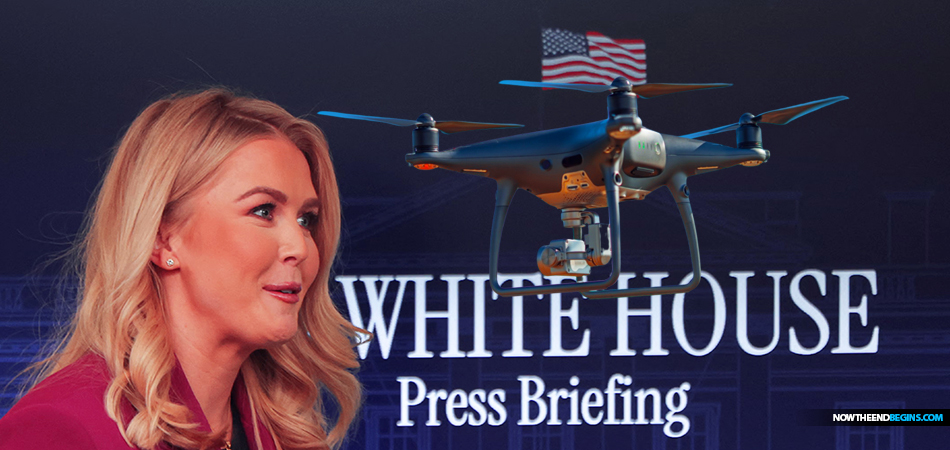
The White House press secretary Karoline Leavitt said on Tuesday that the mysterious drones that were spotted in skies around New Jersey and the east coast at the end of last year were “authorized to be flown by the FAA”. What a relief to know that.
Here we are, at the cusp of America’s new ‘golden age’, and in the White House we have President Donald Trump who is going to reveal the secrets and defuse the wild conspiracy theories that swirl night and day over our nation. Brand new White House press secretary was sent to the batter’s box to knock a softball pitch out of the park. Easy-peasey. All she had to do was look into the camera, and tell the nation what President Trump has uncovered about the New Jersey drones. “Strike 1!” Uh-oh, that didn’t go well. Seems telling the truth is a little more complicated than it might appear.
“And ye shall know the truth, and the truth shall make you free.” John 8:32 (KJB)
Karoline Leavitt quoted Trump directly when she said that “after much study and research, the drones flying over New Jersey in large numbers were authorized to be flown by the FAA for research and various other reasons.” Ohhh, ok, is that all there is to it? We can stop asking questions now? So let’s see if I have it right. The FAA authorized those thousands of drones flights, over 5,000 in one month, for “research”, research of what exactly? The phrase “authorized by the FAA” means very little when you understand that HAARP is also “authorized by the FAA”. And in addition to unspecified ‘research’ they were also authorized to fly for “various other reasons”? You could say that spying on American citizens could be filed under research, the Patriot Act allows for that type of research to take place. You could say that “various other reasons” might include any and every type of nefarious activity that drones flying under the cover of darkness might wish to engage in. Especially the ones flying far above the 400ft limit. Her answer was garbage, saying absolutely nothing while allowing for the possibility for the worst of conspiracy theories to be true. And if you’re waiting for the ‘secret files’ to be opened on JFK, RFK and MLK, don’t hold your breath, nothing will be revealed outside of the standard partly line you already know. Tell the truth, President Trump, this was nonsense. That’s the memo.
White House Press Secretary Karoline Leavitt says New Jersey drones ‘authorized to be flown by FAA’
FROM THE GUARDIAN UK: In the first press briefing of Donald Trump’s second administration, Leavitt said that she had “news directly from the president of the United States that was just shared with me in the Oval Office”.
“After research and study, the drones that were flying over New Jersey in large numbers were authorized to be flown by the FAA for research and various other reasons,” she said, adding that “many of these drones were also hobbyists, recreational and private individuals that enjoy flying drones”.
“In time, it got worse due to curiosity,” she said. “This was not the enemy.”
BREAKING NEWS: Press Secretary says the NJ drones were “authorized by the FAA and were not enemy drones”. Hmm, so all of a sudden, after months of terrorizing Americans, it’s all cool? Nope. The big lie continues. Her “much speaking” explained nothing. pic.twitter.com/TUvVSM8ixy
— Now The End Begins (@NowTheEndBegins) January 28, 2025
People started reporting the drones in the skies over northern New Jersey just before Thanksgiving, noting the aerial objects appeared to be hovering in formation and returned night after night. A flurry of drone sightings occurred in December, including some seen above residential homes, military installations and critical infrastructure such as energy facilities, railway stations and reservoirs. Federal agencies deployed advanced detection technology to the regions where the drones were spotted as well as trained visual observers.
The FBI said it received more than 5,000 reports of drone sightings in a matter of weeks, but only about 100 required further investigation.
As more and more drone sightings were being reported, no one seemed to know for certain where the flying objects were from or who was behind them. Lawmakers in New Jersey, New York, Connecticut and other states on the east coast demanded answers on behalf of the American public, raised concerns about the drones and criticized what they saw as the lack of urgency and transparency on the drone sightings.
One state lawmaker even called for the state of New Jersey to issue a limited state of emergency.
Drone and national security experts continued to tell the public that there was nothing to worry about, and in mid-December, a group of federal agencies, including the Department of Homeland Security, the FBI, the FAA and the Department of Defense, issued a statement saying that they had examined the tips from concerned citizens and assessed that the sightings were a mix of lawful drones, airplanes, helicopters and stars.
Then the FAA issued a month-long drone ban in parts of New Jersey and New York. At the time, Trump, who was then the president-elect, questioned why government officials had not been more forthcoming and said that the “government knows what is happening”.
“Look, our military knows where they took off from – if it’s a garage, they can go right into that garage,” Trump said.
Former president Joe Biden said at the time that the drones were “nothing nefarious” and told the public that his administration was following the issue closely but that there was “no sense of danger”. READ MORE
New reports of drone sightings in Northeast soar after FAA ban lifts
The mysterious drones that sparked a frenzy in the Northeast seem to have returned after the FAA’s temporary restrictions in parts of New Jersey and New York expired. NBC’s Sam Brock reports for TODAY.
Now The End Begins is your front line defense against the rising tide of darkness in the last Days before the Rapture of the Church
- HOW TO DONATE: Click here to view our WayGiver Funding page
When you contribute to this fundraising effort, you are helping us to do what the Lord called us to do. The money you send in goes primarily to the overall daily operations of this site. When people ask for Bibles, we send them out at no charge. When people write in and say how much they would like gospel tracts but cannot afford them, we send them a box at no cost to them for either the tracts or the shipping, no matter where they are in the world. We have a Gospel Billboard program. We are now broadcasting Bible studies, Podcasts and a Sunday Service 5 times a week, thanks to your generous donations. All this is possible because YOU pray for us, YOU support us, and YOU give so we can continue growing.
But whatever you do, don’t do nothing. Time is short and we need your help right now. The Lord has given us an open door with a tremendous ‘course’ for us to fulfill that will create an excellent experience at the Judgement Seat of Christ. Please pray for our efforts, and if the Lord leads you to donate, be as generous as possible. The war is REAL, the battle HOT and the time is SHORT…TO THE FIGHT!!!
“Looking for that blessed hope, and the glorious appearing of the great God and our Saviour Jesus Christ;” Titus 2:13 (KJB)
“Thank you very much!” – Geoffrey, editor-in-chief, NTEB
DARPA
The Ultra-Lethal Secret ‘Black’ Drones Being Built At Area 51
The Pentagon has openly funded work on unmanned combat aircraft, including Northrop Grumman’s X-47, a diamond-shaped drone that can take off and land from aircraft carriers. But aerospace watchers have long presumed that these programs are hiding even more secretive work.
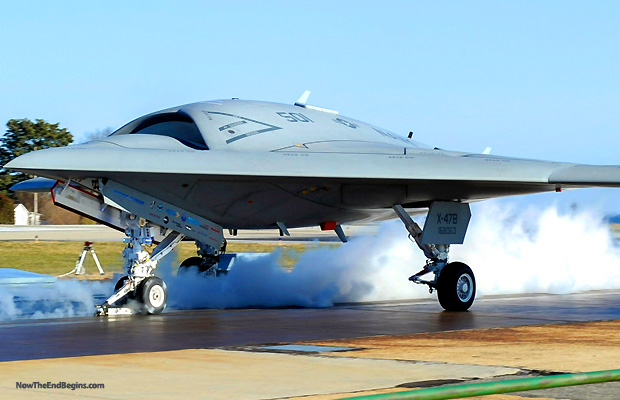
The Future Of Drones From The Defense Advanced Research Projects Agency
In 13 short years, killer drones have gone from being exotic military technology featured primarily in the pages of specialized aviation magazines to a phenomenon of popular culture, splashed across daily newspapers and fictionalized in film and television, including the new season of “24.”

Satellite pictures emerged showing new construction at Area 51, the Pentagon’s top-secret testing area in the Nevada desert. Veteran watchers of “black,” or secret, aircraft, immediately suspected that the Pentagon was preparing to test a new secret aircraft, and the most likely candidate was a stealth drone.
What has not changed all that much — at least superficially — is the basic aircraft that most people associate with drone warfare: the armed Predator. The Predator, with its distinctive bubble near the nose and sensor ball underneath, is the iconic image of drone warfare, an aircraft that grew out of 1980’s work supported by the Pentagon’s future-thinking Defense Advanced Research Projects Agency.
Originally developed to perform surveillance, the CIA added Hellfire missiles and began using the Predator to hunt down members of the Taliban and al Qaeda after the US invasion of Afghanistan in 2001. Though the CIA and Air Force now fly an updated version of the Predator — named Reaper — the drone is still relatively easy to detect, and easy to shoot down, at least for a country with a modern military.
Under development is a new generation of drones that will be able to penetrate the air defenses of even sophisticated nations, spotting nuclear facilities, and tracking down — and possibly killing — terrorist leaders, silently from high altitudes. These drones will be fast, stealthy and survivable, designed to sneak in and out of a country without ever being spotted.
In 2007, satellite pictures emerged showing new construction at Area 51, the Pentagon’s top-secret testing area in the Nevada desert. Veteran watchers of “black,” or secret, aircraft, immediately suspected that the Pentagon was preparing to test a new secret aircraft, and the most likely candidate was a stealth drone.
Now, two unmanned spy drones are under development. One that appears almost ready for combat is the RQ-180, a stealthy spy drone built by Northrop Grumman. Though the Pentagon refuses to confirm its existence, Aviation Week & Space Technology ran this artist’s concept earlier this year and revealed a little about its rumored design.
The RQ-180 is designed to fly very high, for a very long time (perhaps as long as 24 hours). According to Aviation Week, it has a 130-foot wing span and a “cranked kite” stealthy design that would allow it to slip past enemy radar. Chances are it will only be used for surveillance, not attack, though it could carry out an electronic attack.
Another, recently revealed project is a high-altitude drone being developed by Lockheed Martin that can travel up to six times of the speed of sound. The drone would be both a spy and strike aircraft, according to Lockheed. But the SR-72, as Lockheed is calling the twin-engine aircraft, wouldn’t be ready to fly until 2030.
The original Predator was essentially a surveillance aircraft that was turned into an armed drone, so any future replacement aircraft would likely look very different. The Pentagon has openly funded work on unmanned combat aircraft, including Northrop Grumman’s X-47, a diamond-shaped drone that can take off and land from aircraft carriers. But aerospace watchers have long presumed that these programs are hiding even more secretive work. source – NY Post
Barack Hussein Obama
Iran Unveils New High-Tech Drone Based On Obama’s ‘Gift’ In 2011
Iran has unveiled its own copy of an American stealth drone it captured in late 2011, claiming to have cracked the “secrets” of the bat-wing craft and added weapons capabilities.
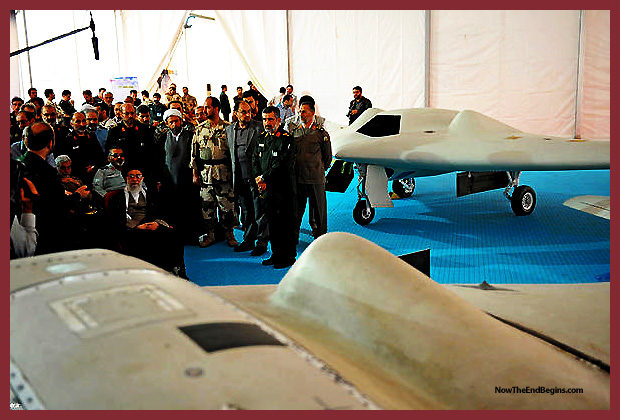
This Is The Drone That Obama Let Them Have Back In 2011
Question Of The Day: When this drone was “captured” by Iran back in 2011, Obama could have immediately order that it be remotely destroyed through satellite and stealth technology so Iran could not have used it. So why didn’t he?
Iran has unveiled its own copy of an American stealth drone it captured in late 2011, claiming to have cracked the “secrets” of the bat-wing craft and added weapons capabilities. Today, Fars News Agency reported that while Iran’s duplicate of the US RQ-170 Sentinel drone was smaller, it also had a “bombing capability to attack the US warships in any possible battle.” The story in Persian was headlined: “America’s nightmare has become reality.” State television showed footage on Sunday it said was of a US aircraft carrier in the Persian Gulf filmed by an Iranian drone.

What’s the best way to give Iran top-secret American drone technology to use against Israel? Let Iran “capture” one as it falls from the sky, and then make no effort to get it back.
The drone replica was unveiled at an Islamic Revolutionary Guard Corps (IRGC) exhibition on Sunday, where Supreme Leader Ayatollah Ali Khamenei was briefed on how the drone, its systems, and structure had been reverse-engineered. He called it a “sweet day.”
The stealth replica would “soon take a test flight,” an IRGC officer said on Sunday. Aerospace chief Amir Ali Hajizadeh said today that they are working on two more models of the replica drone.
Proving its prowess
Engineers with the IRGC were ordered to reverse engineer the captured US drone, which was on a CIA mission to spy on nuclear and military sites in Iran when it was brought down in Iran largely intact. Iran reacted with euphoria, trumpeting the capture in an “electronic ambush” showed Iran’s technical prowess.
“And thus the Iranian-RQ [project] was designated,” said an IRGC aerospace officer, according to Fars News. “To achieve this, considering the difficulties and flight dynamics, we designed a bird with a smaller size that would be cheaper and simpler, and that we have done now. We have done ground tests already, and after this fair, we will do air tests too.”
“Here we didn’t know what type of information we were looking for. There was an issue of encoding and passwords, which thanks to God’s help we have overcome,” said the officer. He said data included video and advanced imaging and was “completely recovered.”
US officials said Iran was incapable of replicating the drone’s sophisticated radar-evading skin and shape, its aerodynamics, and top-of-the-line surveillance equipment, though it might be able to do so with the help of Russia or China. Iran has often made claims of cutting-edge military advances that later did not prove accurate, and it is not clear today what capabilities the replica has.
Khamenei said the lesson of the exhibition – which included unveiling a new cruise missile called “Ya Ali” with a 700 km range, among other new military hardware – was to show that Iranian engineers are capable.
“[It] gives the message of our internal power and capabilities … and declares that: ‘We can’,” said Khamenei. source – CS Monitor
-
George Soros9 years ago
Proof Of George Soros Nazi Past Finally Comes To Light With Discovery Of Forgotten Interview
-
Election 20169 years ago
DEAD POOL DIVA: Huma Abedin Kept Those Hillary Emails That The FBI Found In A Folder Marked ‘Life Insurance’
-
Election 20169 years ago
Crooked Hillary Campaign Used A Green Screen At Today’s Low Turnout Rally In Coconut Creek FL
-
George Soros9 years ago
SORE LOSER: George Soros Declares War On America As Violent MoveOn.Org Protests Fill The Streets
-
Donald Trump9 years ago
Donald Trump Will Be 70 Years, 7 Months And 7 Days Old On First Full Day In Office As President
-
Headline News9 years ago
If Hillary Is Not Guilty, Then Why Are Her Supporters Asking Obama To Pardon Her? Hmm…
-
Election 20169 years ago
WikiLeaks Shows George Soros Controlling Vote With 16 States Using SmartMatic Voting Machines
-
End Times9 years ago
False Teacher Beth Moore Endorses The Late Term Partial-Birth Abortion Candidate Crooked Hillary













